Your Cart is Empty

Plastic is durable, versatile, and cheap. It’s no wonder nearly everything you buy, use, and throw away is plastic. Plastic is everywhere, and it won’t be going anywhere any time soon.
If you’ve ever stepped foot outside, you’ve definitely seen a plastic bag blowing in the wind or fast food cups scattered along the side of the road. Plastic water bottles, bags, and tableware have become a staple for the average household. Buying a case of water bottles or a large pack of paper plates is so convenient and inexpensive that the majority of people opt for those instead of more sustainable options. Items like these are what’s known as single-use plastics.
Single-use plastics are intended to be disposed of after only one use, i.e., plastic bottles, paper plates, plastic bags. Single-use items perpetuate a mindset of convenience over sustainability.
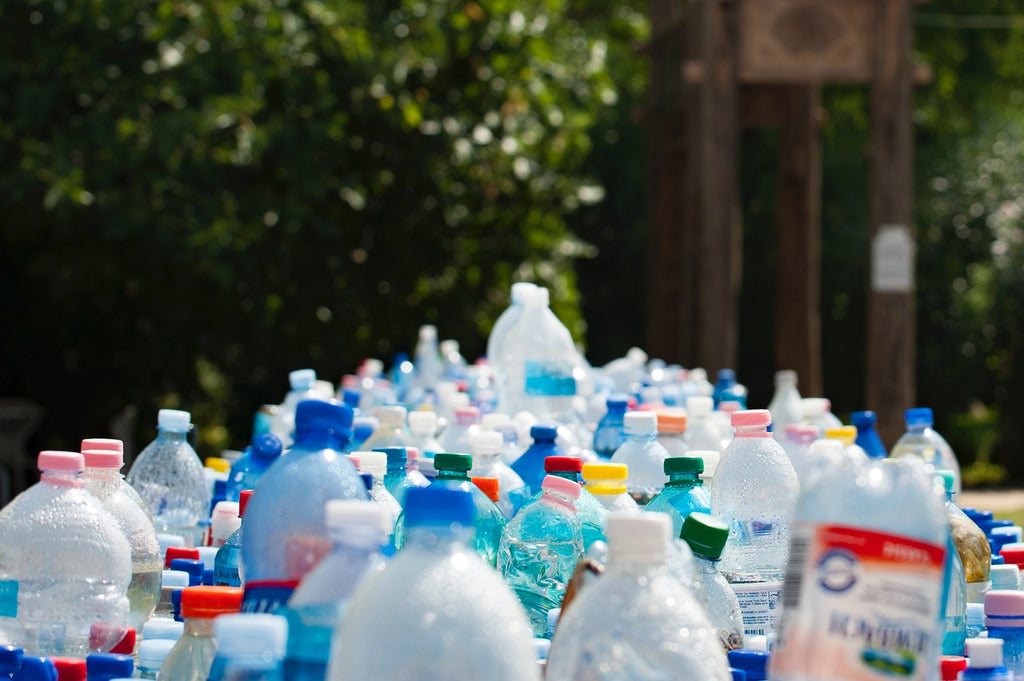
Our world has evolved to rely on single-use plastics, and they contribute half of the 300 million tons of plastic produced every year worldwide. If you’re having a hard time picturing what 300 million tons is, that’s about the weight of every single person on earth combined.
The argument for single-use plastics is simple and self-serving: they’re convenient. In the 1990s the rate of plastic waste generated more than tripled. Since the 1950s when plastic first became commonly used, researchers have estimated that we have produced a whopping 8.3 billion tons of plastic.
Single-use plastics like cups, plates, bags, and packaging overwhelm our streets, drains, rivers, and oceans. The pollution from these items is exacerbated in countries that lack the infrastructure to address the issue of plastic waste, especially Asia. Asia produces the majority of the world’s plastic to keep up with US consumer demands. The US makes up less than 5% of the world’s population yet produces more than 30% of the trash and pollutants.
Not only are Asian countries expected to produce the plastic, but believe it or not plastic waste is also sent back to them for recycling. Their lands become saturated with single-use plastic waste, and if they incinerate the plastic, it releases toxic fumes that pose health hazards to the local communities. Unfortunately the communities with the least amount of resources usually end up with the biggest burden when it comes to environmental issues.
Plastic pollution has impacted every ecosystem on earth, and has negatively affected our climate as well. Plastic production contributes to greenhouse gas emissions throughout its entire life cycle. That means from the moment plastic is made to the moment it gets dumped in the landfill, it is harming our environment.
Plastic is made from oil, and that oil has to come from somewhere. The process of drilling is extremely detrimental to the environment. The refineries that turn crude oil into plastic produce staggering amounts of greenhouse gas, consume tons of energy, and release loads of pollution. If we do not contain the rate of plastic production and plastic waste, its greenhouse gas emissions will reach 1.34 gigatons per year by 2030
Recycling plastics poses an entirely different problem of its own. Most people think just by putting their plastic in the blue bin, they are helping the environment. This is a false sense of security, however. Less than 10% of all plastic waste ever produced is recycled, leaving about 90% to accumulate in our environment. So yes, ideally you should recycle your plastic waste, but recycling is not as simple as it sounds.
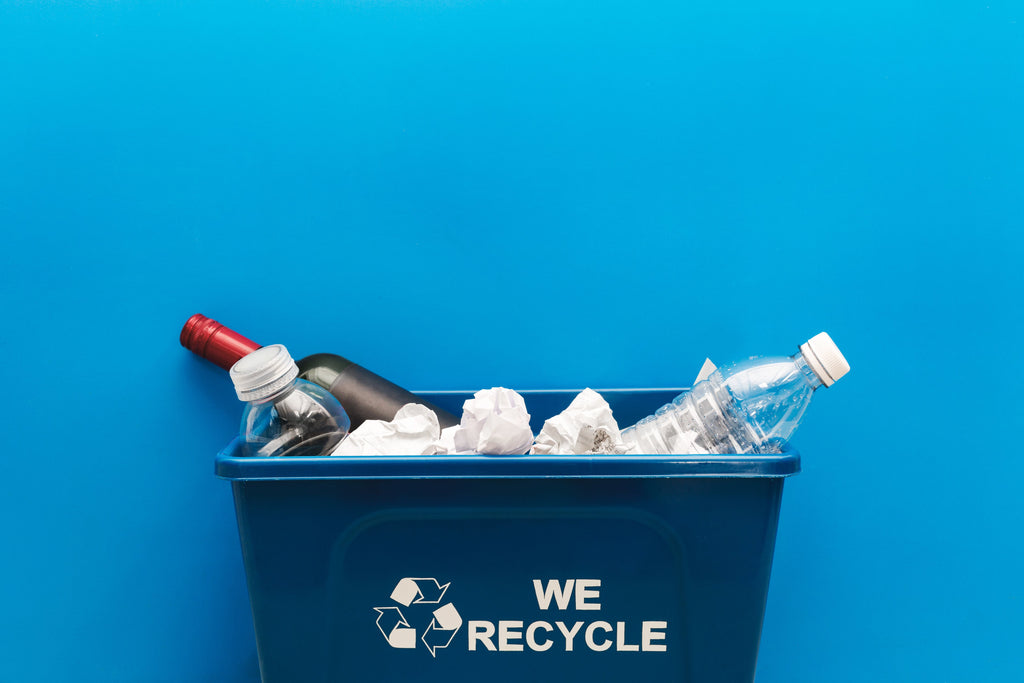
You may not have noticed the difference in the small recycling symbols that come on the bottom of plastic items. They are labeled with seven different numbers and letters, depending on the type of plastic. Only twoout of those seven can be recycled, and one of those two is not accepted by most recycling plants. That means only 14% of all plastics are recyclable to begin with. This puts the responsibility of knowing what to recycle and where on the consumer. There have been efforts lately to minimize the confusion surrounding those recycling symbols.
Why is plastic so difficult to recycle? When plastic is made of more than one type of polymer, it cannot be melted down at one temperature and is thus not recyclable. If all plastic products were made the same weight, size, color, transparency, and of the same polymers, recycling would be straightforward. It could be recycled as easily as aluminum, which has one of the highest rates of recycling worldwide because of its uniformity. As you’re well aware, plastic comes in every shape, size, and color imaginable. Recycling single-use household items is usually not worth it to the recycling plants since sorting through the many different types of plastics is so tedious and time-consuming. Those plastics eventually end up in a landfill or back in our environment.
What are plastics made of that makes them so versatile, lightweight, but also dangerous to the environment? Plastics are made from many carbon-rich chemicals including, coal, cellulose, natural gas, but mostly crude oil. Labs combine these chemicals to create every kind of plastic imaginable. From there, they can be molded into any shape and dyed any color.
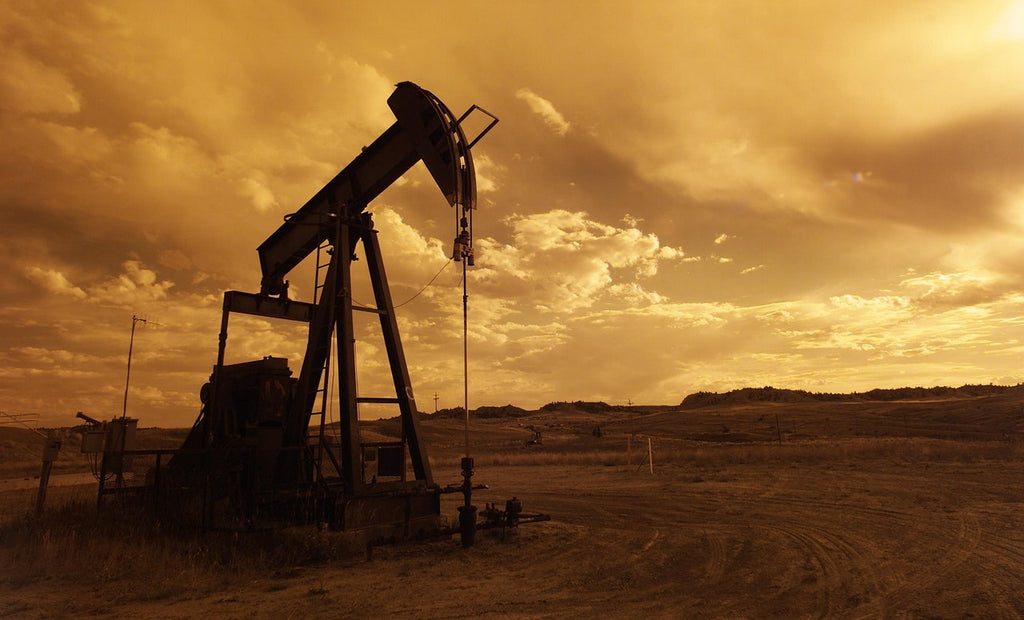
What makes plastic so useful is also what makes it so dangerous to the environment. Plastic is inert, meaning it doesn’t react with other chemicals. That makes plastic useful for storing nearly any kind of liquid, solid, or gas. Because of this, however, plastic does not decay.
By virtue of being made by crude oil, otherwise known as petroleum, plastics are not biodegradable. When something is biodegradable, it means it will decompose naturally and won’t pose a risk to the environment. Plastics do still break down, but in toxic ways.
Over time, plastics break into smaller and smaller pieces in the heat of the sun. Eventually, they break up into what is known as microplastics. Microplastics are the result of larger plastics degrading into smaller pieces only a few millimeters in length. During the process of breaking down, toxic chemicals that were used to form the plastic are released into the environment.
When we say microplastics are everywhere, we mean everywhere.Our land and oceans are covered in microplastics. Scientists have even found microplastics in rainfall from around the world. Scientists collected crustaceans from some of the deepest parts of the ocean and found that 80% of them had microplastic in their digestive tracts. When eaten, those particles can puncture organs or cause fatal blockages.
Microplastics can be equally damaging to our health. They have been found in our bloodstreams and stool samples. An evironmental study in Europe, Japan, and Russia found that all participants had microplastic particles in their stools, leading scientists to conclude that the food we eat contains them as well. The chemicals that are released have been proven to cause hormonal imbalances, which could lead to reproductive issues like infertility and even cancer.
Philipp Schwabl, a researcher at the Medical University of Vienna said, “This is the first study of its kind and confirms what we have long suspected, that plastics ultimately reach the human gut...The smallest microplastic particles are capable of entering the bloodstream, the lymphatic system, and may even reach the liver.”
Plastic is a man-made problem that requires man-made solutions. We have put insurmountable strains on the earth’s oceans, wildlife, and disadvantaged communities. The effects it has on climate change are already being experienced, and without intervention will continue to destroy our environment.
Jennifer Brandon, an oceanographer at Scripps Institution of Oceanography said, “Plastic is kind of the perfect geological marker of this new geological age.” The earth will suffer the negative effects of single-use plastics for hundreds and thousands of years, but we mustn’t let that deter us from making a change now.
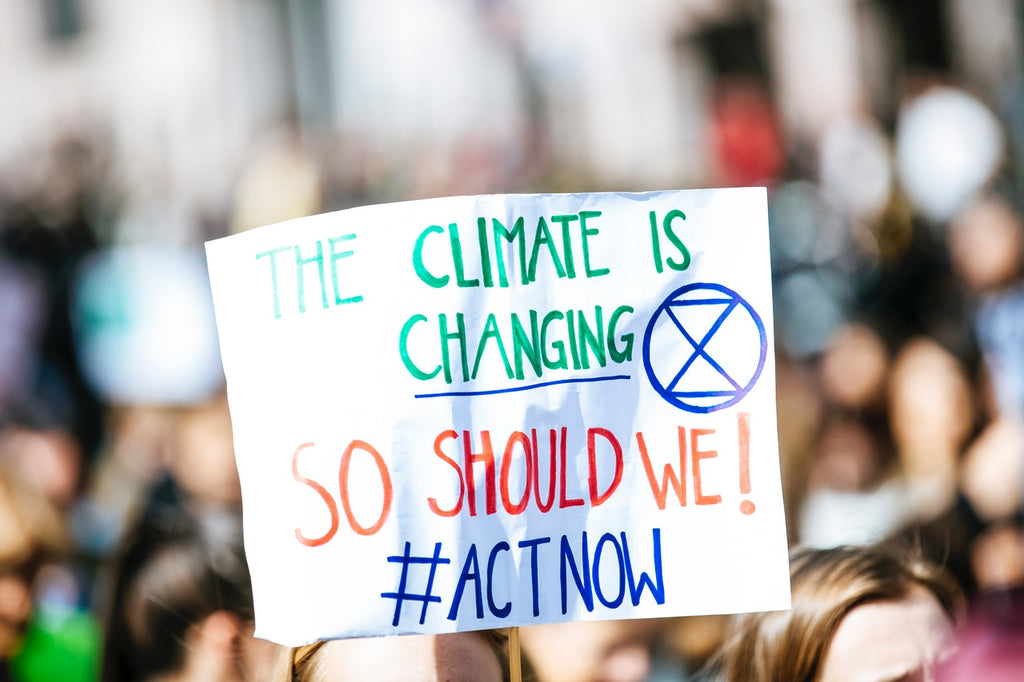
As more people experience climate change and educate themselves on the matter, more will demand a change from their government leaders. Governments can begin to phase out single-use plastics through incentives, social awareness, education, and full-on bans.
The most effective way to combat plastic pollution, however, will be through individual choices and the resulting cultural shift. Shifting the mentality to being selfless in our consumption is not an easy task. You have to convince people that saving the earth from single-use plastic waste is more important than the slight inconvenience of changing their habits.
The zero-waste movement is a recent trend of individuals who are attempting to generate as little waste as possible. They recognize that recycling is not good enough, therefore the best way to ameliorate our effects on climate change is to limit the plastic waste we produce. Some people are so dedicated that they can fit all of their garbage for the entire year in one jar.
Obviously going zero-waste is not doable for the average person, but the idea behind it is a good one. Plastic recycling is so inefficient and ineffective that we shouldn’t rely on it. Instead, we have to aim to generate less plastic waste to begin with. It is cheaper and more practical to prevent littering and single-use plastics today, than it will be to try and clean it up in the future.
Every day consumers decide the direction that markets and products will take. In recent years we have seen a shift toward sustainable household items. You are no longer limited to single-use plastic products, there are now better, more sustainable alternatives on the market.
Plastic water bottles are everywhere; they’re sold in bulk and can be conveniently disposed of after you’ve finished it. Unfortunately only one in six water bottles are recycled, and 80% of them end up in landfills. Consequently US landfills are filled with about 2 million tons of water bottles. Plastic water bottles are not biodegradable and can take up to a thousand years for one of them to decompose.

The solution is to use a reusable bottle. In recent years reusable water bottle brands such as Hydroflask and S’well have shot to popularity. Sarah Kauss, the creator of S’well said, “With the world’s resources and our own personal reserves being spent, we believe that something as simple as buying a beautiful reusable bottle or bowl can make a difference. Every S’well purchased counts towards displacing millions of plastic bottles.” Our favorite water bottle and the one our team uses personally is the Mover Water Bottle from Purist Collective.
By using a reusable water bottle, you’d be saving almost 1,500 plastic bottles per year. Reusable water bottles are a one-time cost versus having to purchase plastic ones throughout the year. They also have features that plastic bottles don’t: they’re spill-proof, they can keep your drink hot or cold all day, clip on to a bag, and have cool designs.
Plastic grocery bags are devastating to the environment. They don’t decompose and instead end up in our drains, oceans, and can be deadly to wildlife. About 500 billion plastic bags are used globally each year, and only a small portion of those are recycled. Plastic bags are durable and reusable, but can exist for centuries before they break down. They also contribute to the issue of microplastics.

The solution is using reusable bags. Reusable shopping bags are more durable and can carry more weight per bag than a plastic one. They can be used for many different things like groceries, lunch totes, or a big purse when you need one. They’re convenient, you can fold it up and keep it in your car or pocket for when you need it.
Reusable shopping bags can also save you money. Many cities in the US have imposed a fee for each plastic bag you use, designed to deter people from using them. This is effective, but inconvenient for shoppers if they don’t carry a reusable shopping bag. Get ahead of the game and ditch the plastic bags.
We all know that fast food is bad for our health, but did you know it was bad for the environment as well? Fast food restaurants use a ton of single-use plastic and styrofoam for their packaging, food containers, utensils, cups, and straws. Plastic as you know can take decades or even centuries to degrade, but styrofoam takes a whopping 900 years to break down in a landfill.
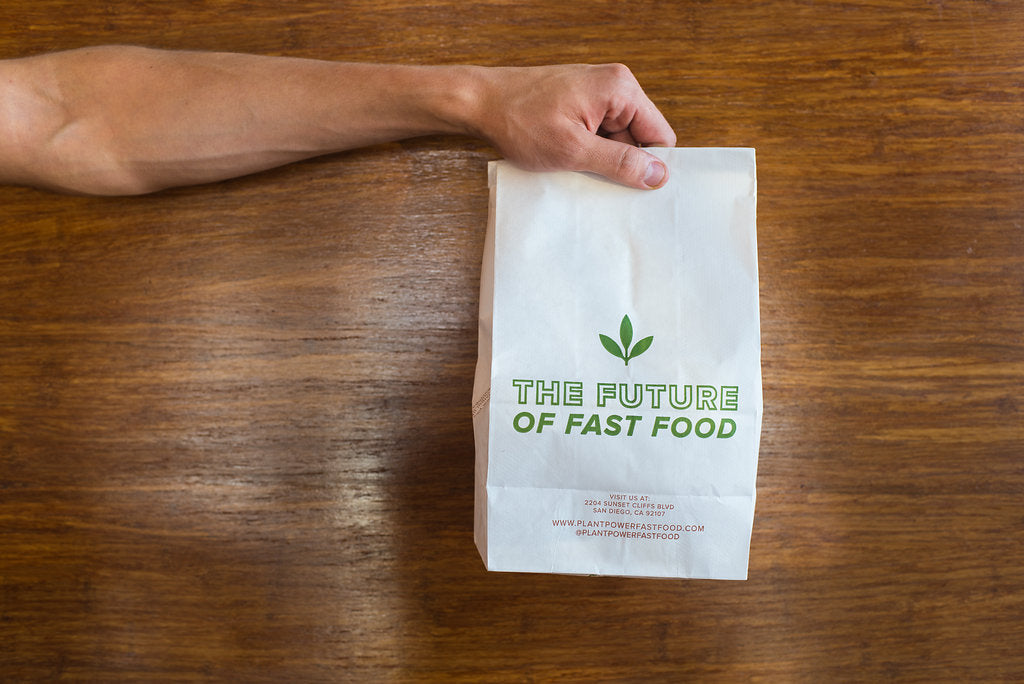
The solution is to avoid eating at fast food restaurants. Although there have been recent measures by large fast food chains to create more sustainable packaging like using paper straws instead of plastic, food packaging still makes up about 40% of all litter blowing through our environment.
By avoiding fast food, you’re doing your part to minimize the demand for single-use plastics and styrofoam packaging, as well as the pollution and emissions generated by those restaurants. Not only will your body thank you for passing up fast food, so will the environment.
If you must eat fast food, consider fast food companies, like Plant Power Fast Food, who are committed to protecting the planet by the selection of food they serve and the packaging they use to serve it.
When you’re grocery shopping, sometimes you don’t have much of a choice but to buy the food that is packaged in a plastic container. That’s just how our consumables are packaged, and that is out of your control. However, you don’t have to toss the plastic container out right away. A good way to prevent single-use plastics from filling up landfills is to make sure they are reused.
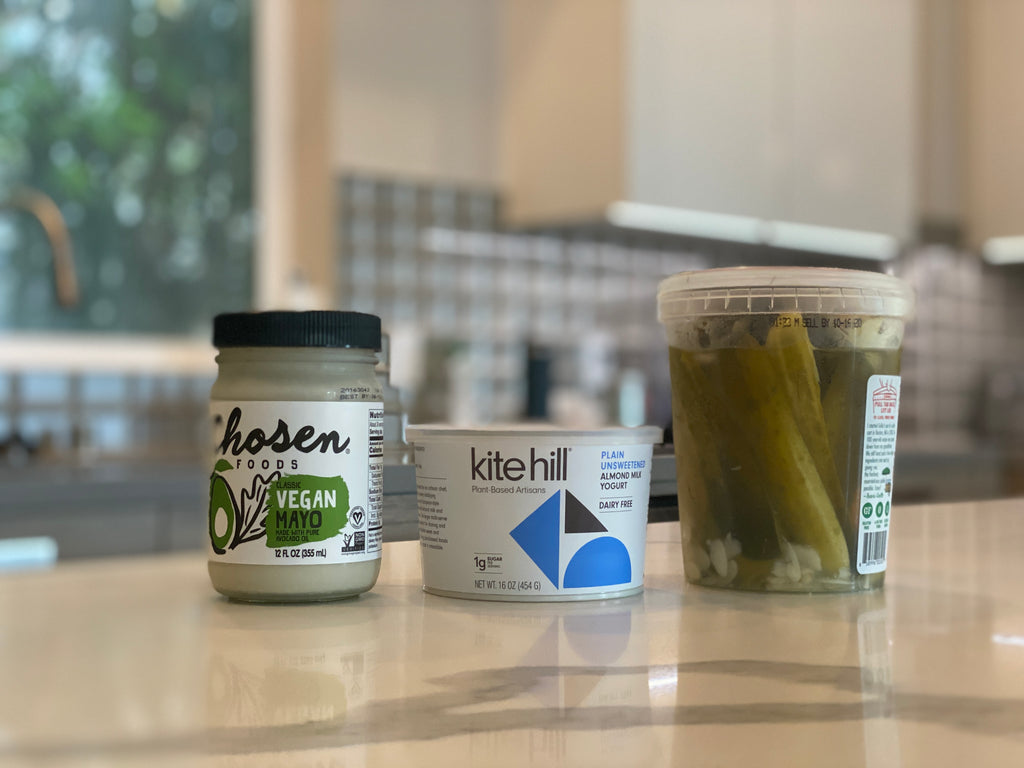
There are tons of creative ways to reuse plastic food containers, which not only helps you save money, but it helps the environment as well. It’ll keep you from having to purchase even more plastic, like food storage containers, because you’ll already have perfectly good plastic containers. Repurposing plastic food packaging is easier than you think, and it reduces the amount of plastic waste generated.
Plastic tableware is terrible for the environment, and it’s something most consumers don’t think twice about. Plastic plates, forks, spoons, and knives are overabundant and extremely toxic for the environment. #CUTOUTCUTLERY is a campaign that urges food delivery services to not include plastic tableware as a default. Many of these plastic plates and utensils end up unused and thrown out.
If you think that plasticware is recycled, you’d be wrong. They are too small and too contaminated for recycling plants to sift through. This results in an astounding 40 billion plastic utensils wasted each year in the US. That’s more than five times the number of people on the planet.
The solution is to use sustainable, biodegradable tableware. As we’ve discussed, plastic and styrofoam take hundreds of years to degrade and release harmful toxins into the environment and even into our bloodstreams. Thanks to the company Chic Leaf, we are no longer limited to plastic tableware or flimsy biodegradable options.
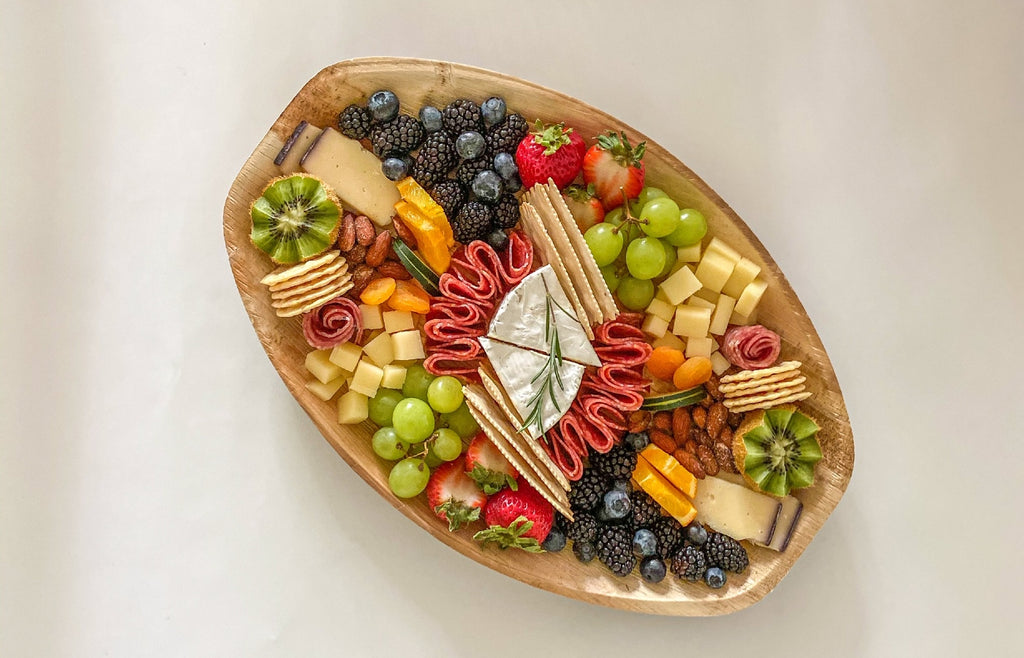
The use of palm leaf plates solves the many problems of plastic plates and in an incredible way. Palm plates look like disposable bamboo plates but they are made from the naturally fallen leaves of the Areca Palm tree. The leaves that have fallen on their own are collected, so as to not contribute to timbering. Then, the leaves are rinsed with water and turmeric to sanitize them and left to air dry. Artisans then handcraft those leaves into beautiful palm plates, palm leaf bowls, and palm leaf trays using heated molds. Several plates can be made from just one leaf. Absolutely no chemicals are used during the process, significantly reducing their carbon footprint compared to paper plates or plastic plates.
Best of all they are 100% compostable, biodegradable, and sustainable. That means, unlike plastic, they will not end up in landfills for hundreds of years, but instead will biodegrade without hurting the environment.
Unlike microwaving plastics that could release harmful microplastics and toxic chemicals into your food, microwaving Chic Leaf plates poses no risk of those plastic toxins. They appear similar to bamboo plates, but are more durable and are softer to the touch. They’re perfect for using at home, but are also elegant and durable enough to use for parties and events.
Plastic is not always the boogeyman, and it does have its benefits. In the public health sector for example, a variety of medical devices from surgical equipment to sterile medical packaging to IV drips are made from plastic. It keeps our food safe from contamination, and is used to filter our drinking water. Even the clothes you are wearing right now are likely made from plastic fibers.
Nearly every aspect of our lives involves plastic in one way or another. Eliminating plastic altogether is not realistic, nor is it financially feasible. The effects plastic has had on climate change and on our environments, though, is horrible and long-lasting.
Our goal is to minimize single-use plastics, and create a cultural shift towards sustainability. There are ways to change the way we consume plastics, whether that’s going zero-waste or simply switching out plastic plates for palm leaf plates.
You as a consumer play a role in deciding the future of single-use plastics. The earth is suffering from the overproduction and careless disposal of plastic, but you can do your part to help. Fewer single-use plastics means a cleaner environment, and a healthier you.